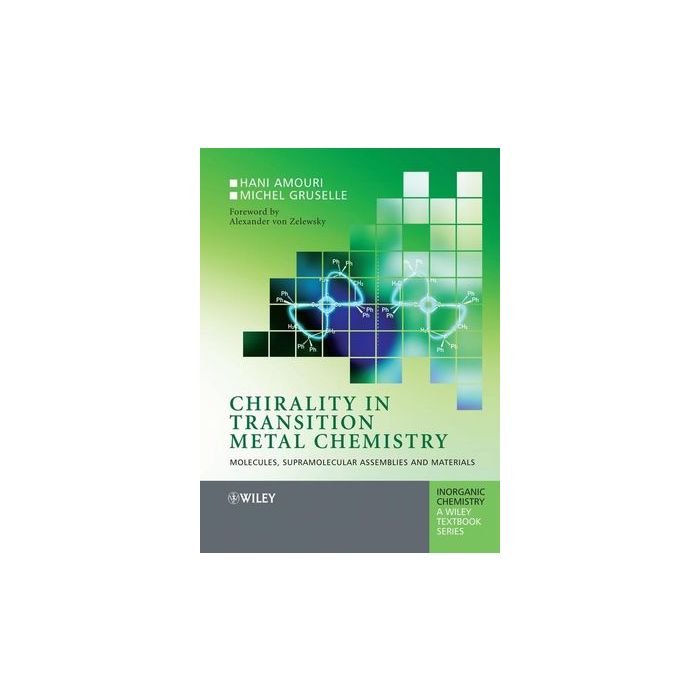Chirality in Transition Metal Chemistry: Molecules, Supramolecular Assemblies and Materials PAPERBACK [Amouri; Gruselle - Wiley - Blackwell]

- ISBN/EAN
- 9780470060544
- Editore
- Wiley - Blackwell
- Formato
- Brossura
- Anno
- 2008
- Pagine
- 260
Disponibile
72,90 €
Chirality in Transition Metal Chemistry is an essential introduction to this increasingly important field for students and researchers in inorganic chemistry. Emphasising applications and real-world examples, the book begins with an overview of chirality, with a discussion of absolute configurations and system descriptors, physical properties of enantiomers, and principles of resolution and preparation of enantiomers. The subsequent chapters deal with the the specifics of chirality as it applies to transition metals.
Maggiori Informazioni
| Autore | Amouri Hani; Gruselle Michel; Woollins Derek; Atwood David A. |
|---|---|
| Editore | Wiley - Blackwell |
| Anno | 2008 |
| Tipologia | Libro |
| Lingua | Inglese |
| Indice | 1. Introduction. 2. Chirality and Enantiomers. 2.1. Chirality. 2.2. Enantiomers and Racemic Compounds. 2.3. Absolute Configurations and System Descriptors. 2.4. Physical Properties of Enantiomers and Racemics. 2.5. Principles of Resolution and Preparation of Enantiomers. 2.6. Summary. 3. Some Examples of Chiral Organometallic Complexes and Asymmetric Catalysis. 3.1. Chirality at Metal Half-sandwich Compounds. 3.2. Chiral-at-metal Complexes in Organic Synthesis. 3.3. Asymmetric Catalysis by Chiral Complexes. 3.4. Summary. 4. Chiral Recognition in Organometallic and Coordination Compounds. 4.1. Octahedral Metal Complexes with Helical Chirality. 4.2. Chiral Recognition Using the Chiral Anion Strategy. 4.3. Brief Introduction to DNA Discrimination by Octahedral Polypyridyl Metal Complexes. 4.4. Summary. 5. Chirality in Supramolecular Coordination Compounds. 5.1. Self-assembly of Chiral Polynuclear Complexes from Achiral Building Units. 5.2. Chirality Transfer in Polynuclear Complexes: Enantioselective Synthesis. 5.3. Summary. 6. Chiral Enantiopure Molecular Materials. 6.1. General considerations. 6.2. Conductors. 6.3. Metallomesogens. 6.4. Porous Metalorganic Coordination Networks (MOCN). 6.5. Molecular Magnets. 6.6. Chiral Surfaces. 6.7. Summary. Index. |
Questo libro è anche in:
